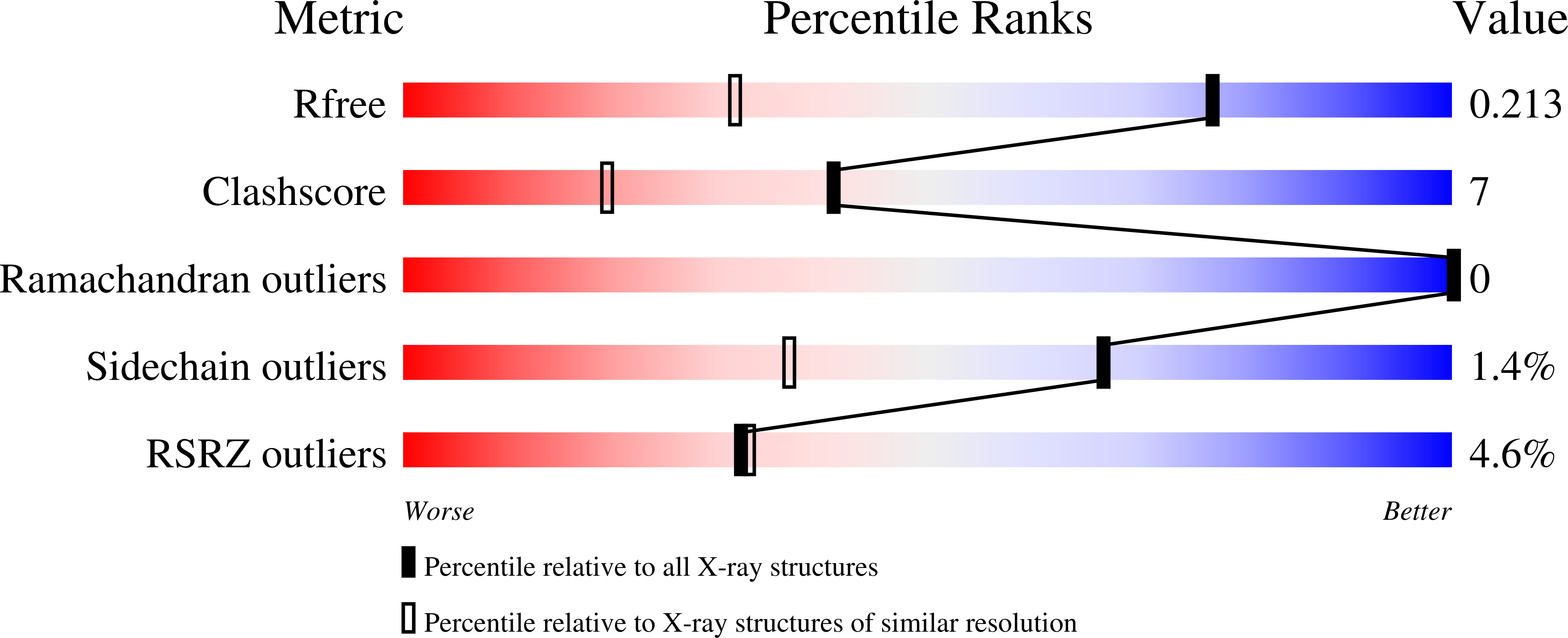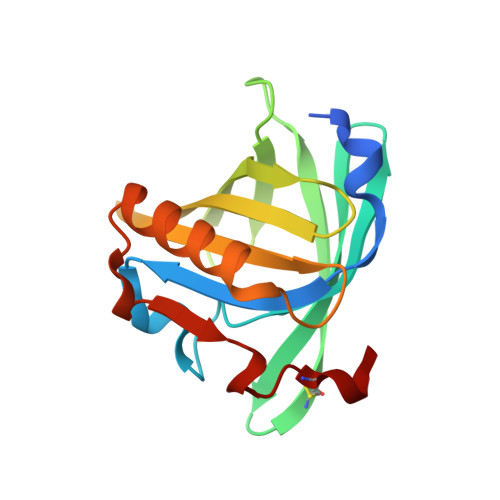High resolution X-ray structures of mouse major urinary protein nasal isoform in complex with pheromones.
Perez-Miller, S., Zou, Q., Novotny, M.V., Hurley, T.D.(2010) Protein Sci 19: 1469-1479
- PubMed: 20509168
- DOI: https://doi.org/10.1002/pro.426
- Primary Citation of Related Structures:
3KFF, 3KFG, 3KFH, 3KFI - PubMed Abstract:
In mice, the major urinary proteins (MUP) play a key role in pheromonal communication by binding and transporting semiochemicals. MUP-IV is the only isoform known to be expressed in the vomeronasal mucosa. In comparison with the MUP isoforms that are abundantly excreted in the urine, MUP-IV is highly specific for the male mouse pheromone 2-sec-butyl-4,5-dihydrothiazole (SBT). To examine the structural basis of this ligand preference, we determined the X-ray crystal structure of MUP-IV bound to three mouse pheromones: SBT, 2,5-dimethylpyrazine, and 2-heptanone. We also obtained the structure of MUP-IV with 2-ethylhexanol bound in the cavity. These four structures show that relative to the major excreted MUP isoforms, three amino acid substitutions within the binding calyx impact ligand coordination. The F103 for A along with F54 for L result in a smaller cavity, potentially creating a more closely packed environment for the ligand. The E118 for G substitution introduces a charged group into a hydrophobic environment. The sidechain of E118 is observed to hydrogen bond to polar groups on all four ligands with nearly the same geometry as seen for the water-mediated hydrogen bond network in the MUP-I and MUP-II crystal structures. These differences in cavity size and interactions between the protein and ligand are likely to contribute to the observed specificity of MUP-IV.
Organizational Affiliation:
Department of Biochemistry and Molecular Biology, Indiana University School of Medicine, Indianapolis, Indiana 46202, USA.

















